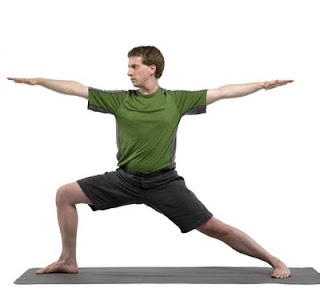Richard Rosen, who writes for Yoga Journal, says (see the link below),
" Your muscles are made up of many fibers. When you use a muscle, not all the fibers contract at the same time. Some rest while the others work, and then they trade places. When you really challenge your muscles, the changeovers can get a little ragged.
.......
Beginning yogis often shake quite a lot. As your muscles get stronger from regular practice, the fibers learn to trade off between firing and resting with smoother coordination. Your quivering will probably subside (though there will always be teachers who turn you into yoga jelly, no matter how strong you get). "
He goes on to say that quivering isn't necessarily bad, but it just means that you may be working harder than you need to. Read more in the following article:
Yoga Journal - Yoga Asana Columns - All Shook Up
(Posted using ShareThis)
When I was newer to yoga, the poses that I "quivered" in most were Paripurna navasana (full boat pose, pictured above), Urdhva prasarita padasana (leg lifts), and Virabhadrasana II (Warrior pose II). Mostly the shaking was in the legs, but in boat pose, I remember my whole body shaking uncontrollably! This doesn't happen to me as much now, of course, but if I hold a pose for longer than I normally do, my body sometimes "gets the shakes" again.
Do your muscles shake in certain poses? Which poses? Have you seen improvement in the shaking since you started taking classes? Do you practice these poses in between classes?









